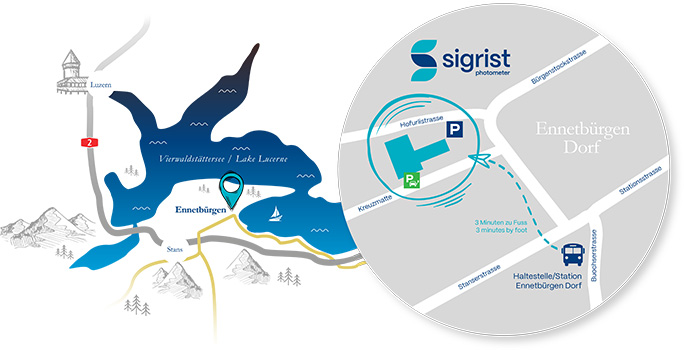Visibility in road tunnels is determined by photometric measurement of the extinction coefficient K. According to Koschmieder, this coefficient bears the following relation to the standard visibility LV:
$L_{V} = \frac{3.9}{K}$
Instruments exist that determine the light loss over a certain distance (3 to 5 m) by measuring the light intensities I0 (before the detection zone) and I (after passing through the detection zone). In practical use, however, these transmitted light instruments call for very precise installation and considerable servicing effort.

Fig. 55: Visibility monitor within the traffic zone (monitor 1, in-situ), outside the traffic zone (monitor 1, extractive) and smoke detector within the tunnel ceiling (instrument 2)
A much more practical method is measurement of the scattered light rather than the transmitted light. Instead of measuring the attenuation over a certain distance, it measures the intensity of the light scattered sideways by the illuminated dust particles. Because there is no need for a long measuring distance, measurement can take place right inside the instrument. The air is drawn out of the tunnel and fed to the instrument, thus eliminating all the drawbacks of mounting it inside the tunnel. The photometer is placed at an accessible spot outside the traffic zone – as far as 500 m away from the sampling point if need be.
It is also advantageous to be able to heat the air ahead of the flow cell to eliminate the effects of fog and moisture. In addition, a switching system can be installed to link a number of measuring points with a single visibility meter.

